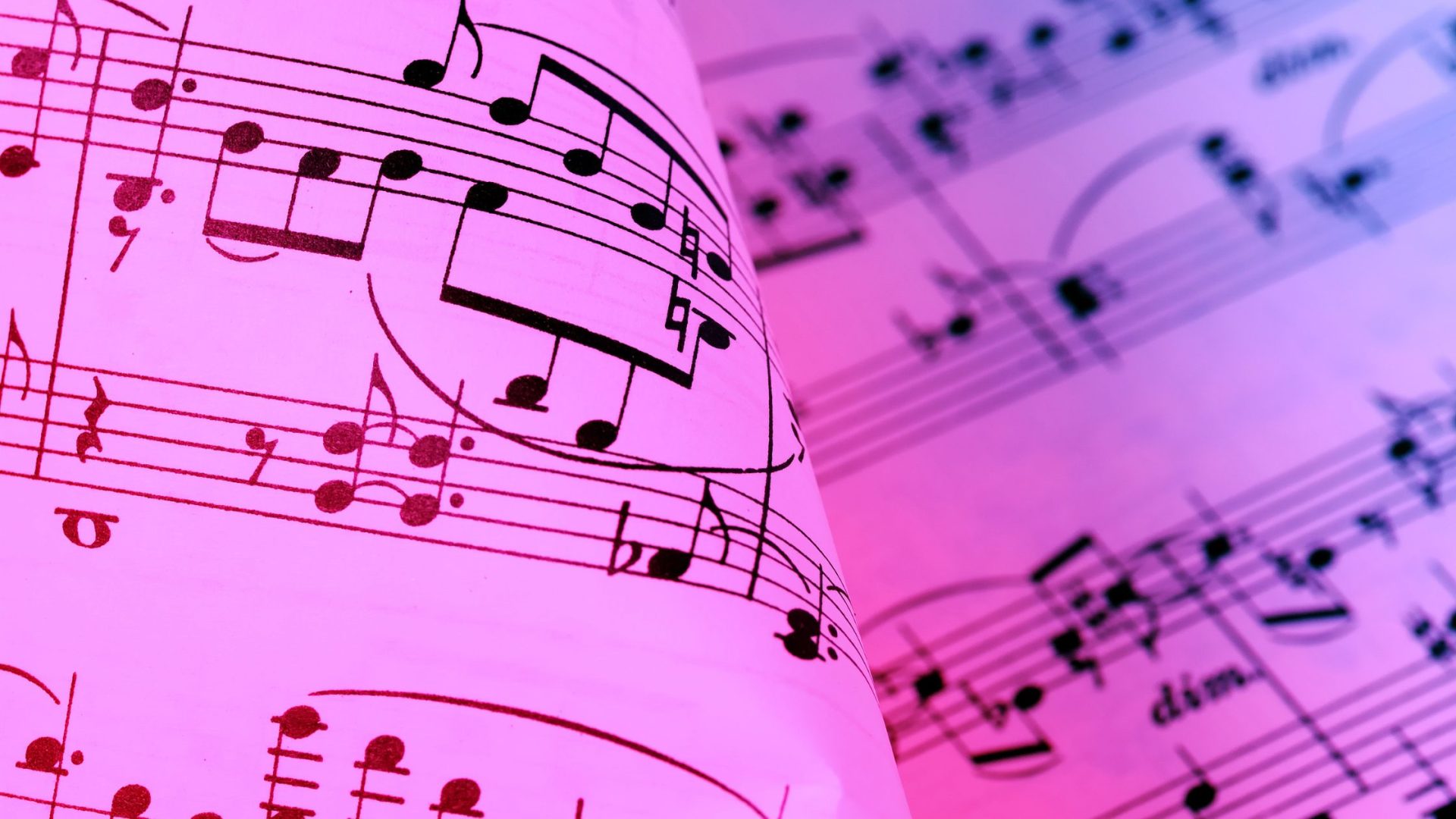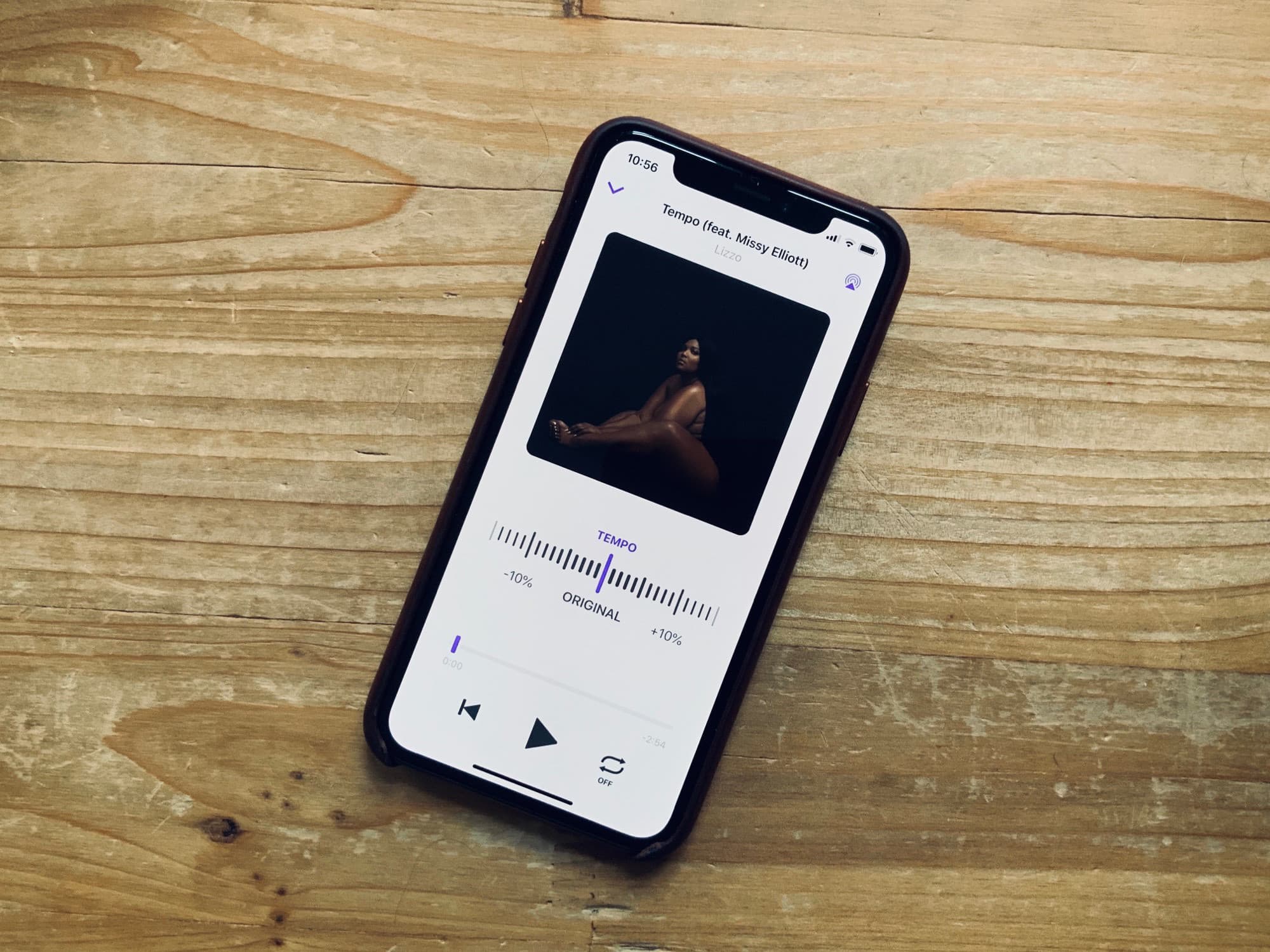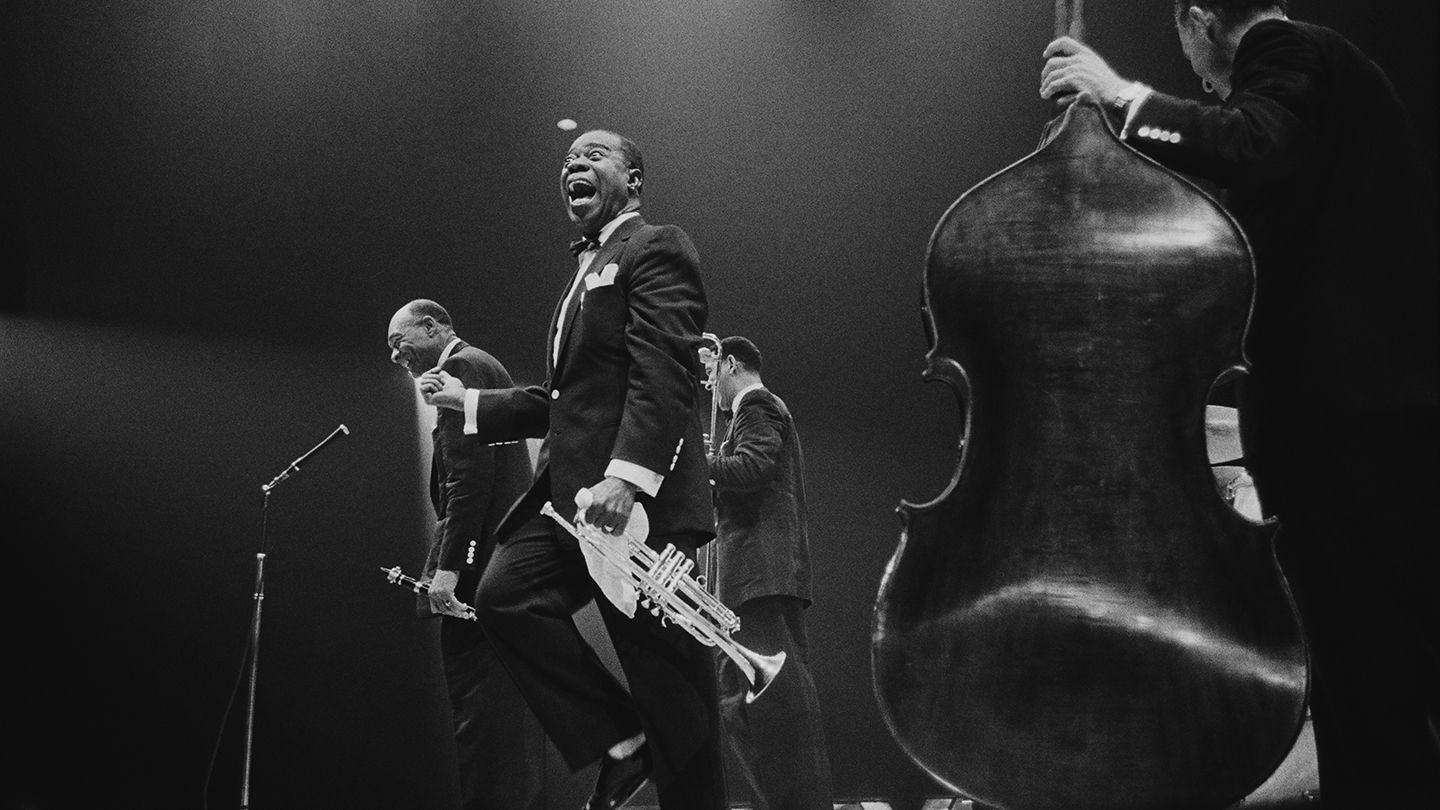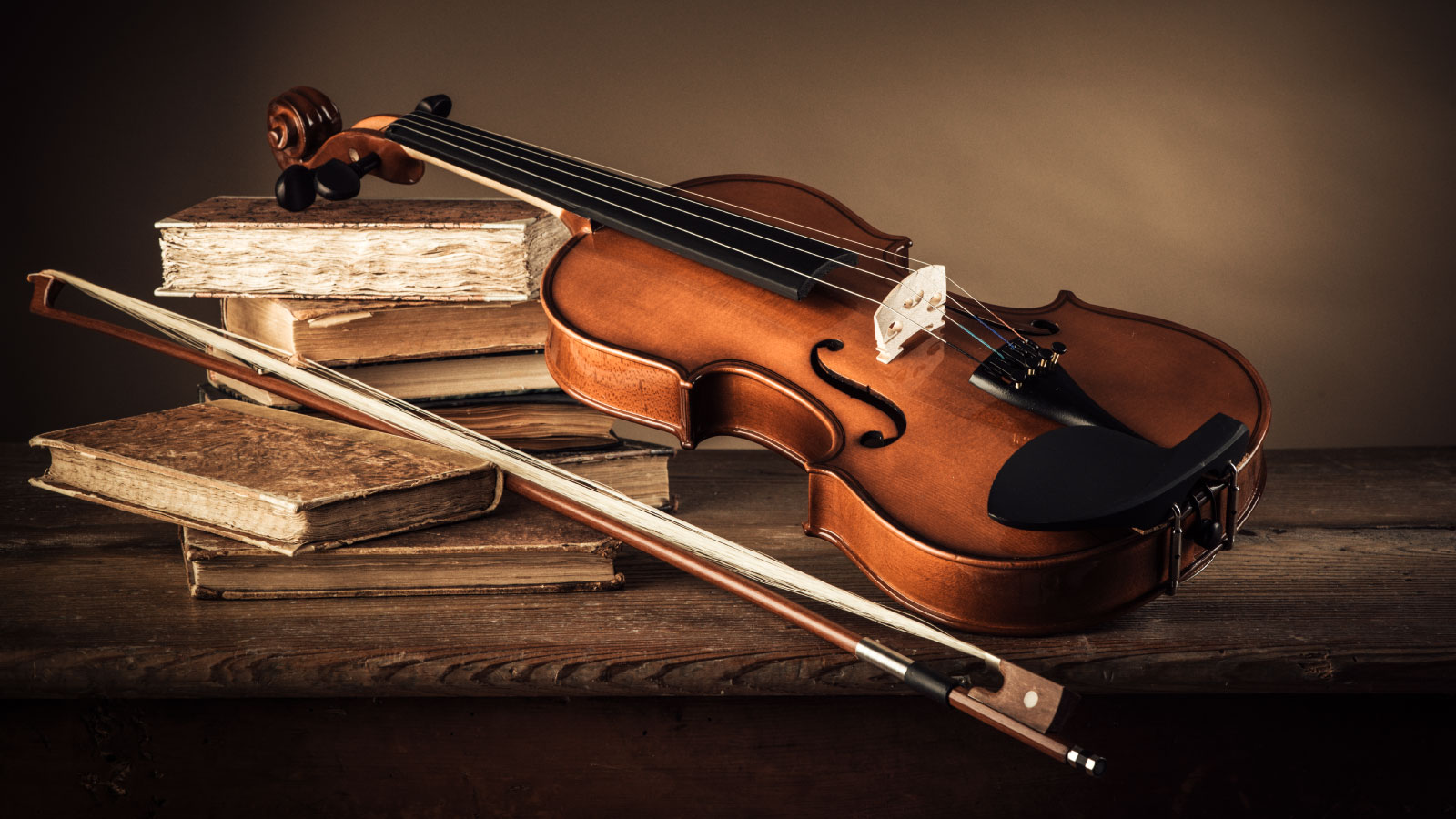Home>Production & Technology>Tempo>What Language Is Used To Notate Dynamics And Tempo In Music


Tempo
What Language Is Used To Notate Dynamics And Tempo In Music
Modified: January 22, 2024
Discover the language used to express dynamics and tempo in music. Explore the significance of tempo in creating rhythm and mood.
(Many of the links in this article redirect to a specific reviewed product. Your purchase of these products through affiliate links helps to generate commission for AudioLover.com, at no extra cost. Learn more)
Table of Contents
Introduction
Welcome to the world of music notation! In the realm of music, dynamics and tempo play a crucial role in shaping the expression and character of a composition. These elements not only give life to the music but also guide performers in bringing their interpretations to life. Whether you’re a musician, a music enthusiast, or just someone curious about the intricacies of music notation, it’s important to understand how dynamics and tempo are notated.
Dynamics refer to the volume or intensity of the music – how loud or soft it is played. From the delicate pianissimo to the thunderous fortissimo, the dynamics offer a range of possibilities to convey emotions and create dramatic effects. Tempo, on the other hand, refers to the speed at which the music is played. It sets the pace and rhythm of a piece, ranging from adagio for a slow and leisurely tempo to presto for an exhilaratingly fast pace.
Notation systems exist to give musicians a standardized way of notating dynamics and tempo in sheet music. These systems ensure that performers can accurately interpret and reproduce the desired dynamics and tempo specified by the composer. In this article, we will explore the commonly used musical symbols for dynamics and tempo and how they are incorporated into sheet music to guide performers.
Whether you’re a performer looking to polish your interpretative skills or a composer aiming to convey your musical vision, understanding the principles of notating dynamics and tempo is essential. So, let’s dive deeper into the world of music notation and explore the fascinating language used to notate dynamics and tempo in music!
Dynamics in Music
Dynamics in music are a crucial element that adds depth, emotion, and contrast to a composition. They guide the performer in conveying the intended expression and shaping the musical narrative. Dynamics can range from the softest whispers to powerful crescendos, allowing musicians to create a nuanced and captivating performance.
In music notation, dynamics are represented by specific symbols that indicate the intended volume or level of intensity. These symbols serve as instructions to the performer on how softly or loudly to play a particular section or passage of music. The most commonly used symbols for dynamics include:
- p (piano) – meaning “soft” in Italian, indicates a soft volume
- pp (pianissimo) – meaning “very soft” in Italian, indicates an extremely soft volume
- mp (mezzo-piano) – meaning “moderately soft” in Italian, indicates a moderately soft volume
- mf (mezzo-forte) – meaning “moderately loud” in Italian, indicates a moderately loud volume
- f (forte) – meaning “loud” in Italian, indicates a loud volume
- ff (fortissimo) – meaning “very loud” in Italian, indicates an extremely loud volume
- fp (forte-piano) – meaning “loud-soft” in Italian, indicates playing loud initially and immediately softening the volume
These symbols can be combined or modified to indicate variations in volume, such as ppp (pianississimo) for an even softer volume or fff (fortississimo) for an extremely loud volume. Additionally, musicians can use descriptive markings, such as crescendo (gradually getting louder) or diminuendo (gradually getting softer), to further specify dynamic changes within a piece of music.
Understanding dynamics and their notations is essential for a performer to accurately interpret the composer’s intentions and effectively evoke the desired emotional impact. By skillfully manipulating dynamics, musicians can captivate listeners and create a truly immersive musical experience.
Tempo in Music
Tempo is a fundamental aspect of music that dictates the speed, rhythm, and overall character of a composition. It sets the pace at which the music unfolds and influences the emotional impact it creates. From slow and contemplative pieces to fast and energetic compositions, tempo plays a significant role in shaping the musical experience.
Tempo is indicated in music notation using specific Italian terms that provide a standard reference for the desired speed. These terms not only convey the tempo but also provide a sense of the musical style and atmosphere. Some commonly used tempo markings include:
- Adagio – meaning “slow and stately,” indicating a leisurely tempo
- Andante – meaning “at a walking pace,” suggesting a moderately slow tempo
- Allegro – meaning “lively and fast,” indicating a brisk tempo
- Presto – meaning “very fast,” indicating a rapid tempo
These tempo markings serve as a reference point for performers, providing them with a general idea of the intended speed. However, they can be further modified with additional expressions to indicate slight variations in tempo. For example, Andante con moto means “moderately slow with motion,” implying a slightly faster pace than a regular Andante.
Additionally, modern music notation employs metronome markings, which specify the exact beats per minute (BPM) of a composition. This precise approach ensures consistency in tempo across different performances. For example, a metronome marking of 120 BPM indicates that there are 120 beats per minute, setting a steady tempo for the piece.
As a musician, understanding tempo and its notations is essential in accurately interpreting the composer’s intentions and maintaining a cohesive performance. It allows for the proper execution of rhythmic patterns, phrasing, and overall musical flow.
Mastering tempo is not only important for performers but also for composers who want to effectively convey their musical vision. By carefully selecting the tempo indications, composers can guide performers in capturing the desired mood and energy of their compositions.
Tempo, alongside dynamics, forms the backbone of musical expression, and its precise notation ensures that every performance remains faithful to the composer’s original intentions.
Notation Systems for Dynamics and Tempo
Notation systems are used in music to provide a standardized way of representing dynamics and tempo in sheet music. These systems ensure that performers can accurately interpret and reproduce the desired dynamics and tempo specified by the composer.
For dynamics, the most commonly used notation system involves the use of dynamic markings, such as letters and symbols, which indicate the intended volume or level of intensity. These markings are positioned above or below the musical staff to specify the desired dynamic throughout the piece or for specific sections. The dynamics notation system provides a clear visual representation of the intended volume, allowing performers to dynamically shape their interpretation.
Tempo is notated using a combination of Italian terms and metronome markings. The Italian terms, such as Adagio and Allegro, give a general indication of the tempo’s character and speed. These terms are positioned at the beginning of a composition or section, providing a starting reference for the tempo. In addition to the Italian terms, metronome markings provide a more specific indication of the exact beats per minute (BPM). Metronome markings are typically represented above the staff, allowing performers to accurately maintain the desired tempo throughout the piece.
Both the notation systems for dynamics and tempo are essential tools for musicians, as they enable clear communication of the composer’s artistic intent. These notations create a common language for performers, ensuring consistent interpretations and facilitating effective rehearsals and performances.
It is worth noting that notation systems for dynamics and tempo may slightly vary depending on music style, era, and individual composer preferences. However, the general principles and symbols remain consistent, allowing for efficient communication between composers, performers, and music enthusiasts.
Musical Symbols for Dynamics
When it comes to notating dynamics in music, various symbols are used to indicate the desired volume or level of intensity. These symbols provide performers with clear instructions on how loudly or softly to play specific sections or passages. Here are some commonly used musical symbols for dynamics:
- p (piano) – This symbol, meaning “soft” in Italian, instructs performers to play with a soft volume.
- pp (pianissimo) – Meaning “very soft” in Italian, this symbol indicates an even softer volume than piano.
- mp (mezzo-piano) – Translating to “moderately soft,” this symbol suggests a moderately soft volume.
- mf (mezzo-forte) – Meaning “moderately loud,” this symbol indicates a moderately loud volume.
- f (forte) – This symbol, meaning “loud” in Italian, instructs performers to play with a loud volume.
- ff (fortissimo) – Indicating “very loud,” this symbol represents an extremely loud volume.
- fp (forte-piano) – This symbol combines both a loud and soft dynamic. It indicates that a passage starts loud and immediately softens to a soft volume.
These symbols can be combined or modified to convey more nuanced dynamic changes. Adding additional ‘p’s or ‘f’s, such as ppp (pianississimo) for an extremely soft volume or fff (fortississimo) for an extremely loud volume, further specifies the intended dynamic level.
Furthermore, descriptive terms and symbols can be used to indicate gradual changes in dynamics. For example, “crescendo” instructs performers to gradually increase the volume, while “decrescendo” or “diminuendo” indicates a gradual decrease in volume. These terms, often accompanied by specific notations, guide performers in shaping the dynamics over a passage of music.
Understanding and correctly interpreting the symbols for dynamics is essential for musicians to deliver expressive performances. By accurately following the dynamic notations, performers can effectively convey the intended emotional impact and bring out the subtle nuances of the music.
Musical Symbols for Tempo
To notate tempo in music, a variety of symbols and terms are used to indicate the desired speed and character of a composition. These symbols provide performers with a clear reference for the pace at which the music should be played. Here are some commonly used musical symbols for tempo:
- Adagio – Derived from the Italian word meaning “slow and stately,” Adagio suggests a slow tempo, often conveying a sense of grace and introspection.
- Andante – Meaning “at a walking pace” in Italian, Andante suggests a moderately slow tempo, providing a comfortable and flowing musical pace.
- Allegro – Translating to “lively and fast,” Allegro indicates a fast and lively tempo, bringing energy and excitement to the music.
- Presto – Derived from Italian, meaning “very fast,” Presto indicates an extremely fast tempo, often associated with exhilarating and virtuosic passages.
These terms provide a general indication of the tempo’s character, but they can also be modified or combined with other expressions to convey more specific tempo instructions. For example, “Andante con moto” means “moderately slow with motion,” suggesting a slightly faster pace than a regular Andante.
In addition to the Italian terms, metronome markings are used to provide precise tempo indications. This notation system specifies the exact number of beats per minute (BPM) for a particular composition. For example, a metronome marking of 120 BPM indicates that there are 120 beats per minute, setting a steady tempo throughout the piece.
It’s important for performers to accurately interpret and adhere to the indicated tempo symbols. This allows for a consistent and cohesive performance, ensuring that all musicians in an ensemble are aligned in their tempo interpretation.
Composers carefully choose tempo markings and symbols, as they contribute significantly to the overall character and communication of their music. These tempo symbols serve as a guiding framework for performers, helping them grasp the intended mood and energy of the composition.
Understanding the various symbols and terms used to notate tempo enables performers to faithfully execute the composer’s intentions, delivering a compelling and coherent musical performance.
Notating Dynamics and Tempo in Sheet Music
Sheet music serves as a visual representation of a musical composition, providing performers with the necessary information to accurately interpret the dynamics and tempo set by the composer. Notating dynamics and tempo in sheet music involves the use of specific symbols and markings to guide performers in their execution of the music.
To indicate dynamics in sheet music, composers place dynamic markings above or below the musical staff. These markings consist of letters, symbols, or descriptive terms that represent the desired volume or level of intensity. For example, a dynamic marking like “ff” (fortissimo) positioned above a note indicates a very loud volume. Composers can also use hairpins (> or <) to indicate crescendos or diminuendos, depicting gradual volume changes over a passage of music.
Tempo indications, on the other hand, are typically placed at the beginning of a composition or section. Composers make use of Italian terms such as “Andante” or “Allegro” to convey the desired tempo’s character. These terms provide a starting reference for performers to gauge the speed of the music. Additionally, composers may include a metronome marking (BPM) above the staff to provide an exact tempo reference.
In sheet music, dynamics and tempo notations work in conjunction, allowing performers to interpret the composer’s intentions accurately. A piece may begin with a tempo indication, followed by dynamic markings throughout the score to guide performers in their expressive interpretation. Musicians must carefully observe and adhere to these notations to maintain the intended musical atmosphere and emotional impact.
Effective communication and interpretation of dynamics and tempo in sheet music are essential components of a successful performance. Performers must develop a keen understanding of the dynamic and tempo symbols used and be able to translate them into appropriate musical expression. This includes adjusting volume levels and maintaining a consistent tempo as indicated by the composer.
By accurately notating dynamics and tempo in sheet music, composers can effectively convey their musical vision to performers. This notation system ensures that the expressive intentions of the composer are faithfully executed, resulting in powerful and captivating musical performances.
Conclusion
Understanding how dynamics and tempo are notated in sheet music is essential for musicians of all levels. It allows performers to accurately interpret the composer’s intentions, bringing the music to life through nuanced expressions and precise execution.
Dynamics, represented by symbols such as piano, forte, and variations thereof, guide the performer in creating variations in volume and intensity. These markings, combined with gradual changes indicated by crescendos and diminuendos, enable performers to shape the musical narrative and evoke emotion.
Tempo indications, conveyed through Italian terms like Adagio or Allegro, provide performers with a reference for the desired speed and character of the music. Metronome markings further enhance precision by specifying the exact beats per minute.
In sheet music, notating dynamics and tempo require careful attention to detail and adherence to established conventions. It is through these notations that composers communicate their artistic vision to performers, shaping the intended mood, energy, and expression of a composition.
For performers, mastering the language of dynamics and tempo notations is crucial for delivering powerful and emotionally engaging performances. By accurately interpreting and executing the dynamic and tempo markings, musicians can captivate audiences and convey the intended musical message.
In conclusion, dynamics and tempo play vital roles in music notation, giving performers the tools to infuse their performances with depth, emotion, and precise pacing. By understanding and embracing the notation systems for dynamics and tempo, musicians can embark on a journey of musical expression, breathing life into each note and capturing the essence of the composer’s intentions.











